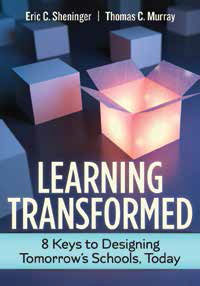Making the Most of EdTech Dollars


A portion of the following is an excerpt from the new AS CD book, Learning Transformed: 8 Keys to Designing Tomorrow’s Schools, Today.
As districts work through the purchasing process, they must strategically develop a refresh cycle for all edtech that makes student-centered, personalized learning possible. School leaders must balance infrastructure and device spending with operating efficiency, security mitigation, and responsibility for using every budgeted dollar well. When developing refresh cycles, districts should keep the following in mind:
1 Analyze the hardware landscape. Identify, analyze, and log all aspects of the infrastructure ecosystem. This includes the district core, firewall, servers, switches, data storage appliances, wireless gear, phone system, fiber lines, and district devices. District technology leaders must be in the habit of maintaining an accurate inventory of all aspects of the digital ecosystem.
2 Predict the life cycle of the various technologies. Balancing the various life cycles of the infrastructure ecosystem can be a daunting—yet necessary—task. With devices needing replacement at a faster rate than servers and wireless gear, developing an 8- to 10-year flexible refresh plan is essential.
3 Predict replacement and upgrade costs. With the constant evolution of new technologies and cost structure, school leaders must review approximate replacement and upgrade costs on a yearly basis. Those making purchasing decisions should collaborate with leaders in other districts to ensure their current method of refinement is efficient and cost-effective.
4 Staying on top of the latest capabilities is vital. With infrastructure costing millions of dollars, school leaders must continue to press technology departments for ways to do things better and cheaper, while ensuring quality and reliability in the process. From leasing equipment to virtualizing environments to bundling services or working with consortiums, pricing and anticipated need are in continuous flux, yet school leaders must bring stability to the process.
5 Map the anticipated timeline. Technology leaders must map out the approximate refresh timeline. This ensures long-term planning, which is key to sustainability.
Tools and ideas to transform education. Sign up below.
6 Stay current with federal and state support. Staying up to date with the availability of federal and state funding, in areas such as E-Rate (Priority 1 and Priority 2), Title 1, and ESSA state block grants such as Title 4, is vital.
7 Load balance the yearly budget allocation. When it comes to budget, one main goal for school leaders is to keep costs level. In order to do so, these leaders must load balance their budgets according to anticipated costs and timelines. Districts with larger numbers of schools may elect to replace higher-cost items, such as switches and wireless gear, in a phased approach.
8 Consider the intangibles. As district leaders know, there are certain purchases that occur once a decade at most. Examples include the district phone system and fiber lines. Due to some state laws restricting long-term “saving” for such systems, district leaders are encouraged to work closely with their school boards on plans for the replacement of such systems. This also includes expenses the district may incur due to damage from unforeseen circumstances such as weather-related events. School technology leaders should also work closely with their business offices to understand the district insurance coverage for such events.
9 Beware of one-time funding. School leaders must tread carefully when relying on one-time funding for infrastructure purchases. Understanding that such one-time funding purchases will need to be replaced helps districts avoid disastrous scenarios in the future.



7 TIPS FOR LEADING EDTECH INNOVATION
1 Maintain a laser-like focus on student learning.
2 Promote, encourage, and model the active use of technology as opposed to passive, consumption-based use.
3 Build student agency and support students in creating dynamic digital footprints.
4 Move from acceptable to responsible use policies and procedures.
5 Give your team voice and choice, while making professional learning personal.
6 Stay up to date with federal, state, and local privacy laws and policies.
7 Ensure sustainability and leverage a long-term vision and plan.
So what’s your take? How can school technology leaders systemically refresh their district’s vital technology infrastructure to ensure it remains robust? We’d love to hear your thoughts! Use #LT8keys to continue the conversation online.
Eric C. Sheninger serves as a Senior Fellow at the International Center for Leadership in Education. Connect with him at @e_sheninger and at ericsheninger.com. Thomas C. Murray serves as the Director of Innovation for Future Ready Schools, a project of the Alliance for Excellent Education, located in Washington, D.C. Connect with him at @cmurray and at cmurray.com.
